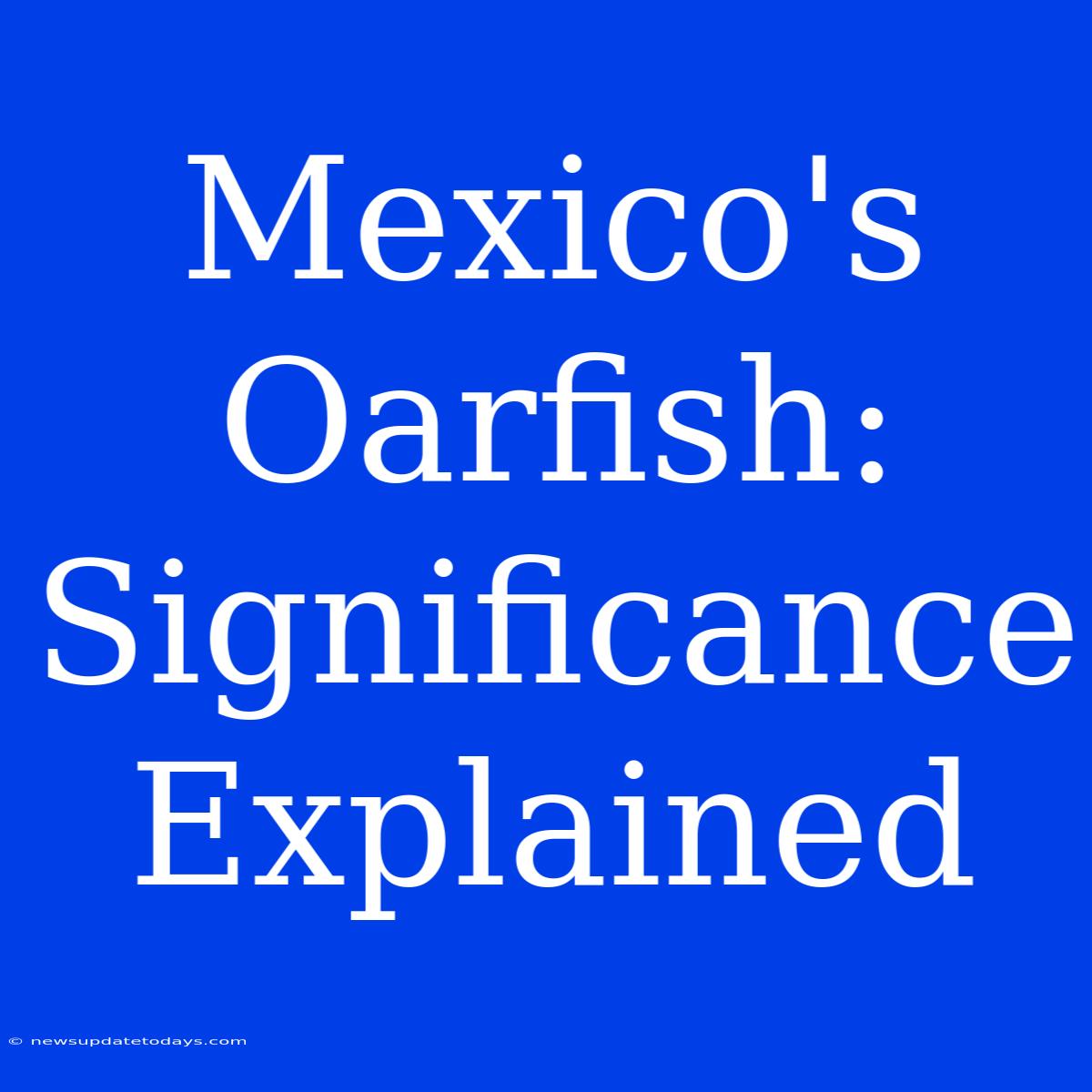Mexico's Oarfish: Unraveling the Significance of These Deep-Sea Giants
Mexico's coastline, particularly the Pacific side, has witnessed several sightings of the oarfish ( Regalecus glesne), a creature of myth and mystery inhabiting the deep ocean. These infrequent appearances have sparked both fascination and speculation, leading many to wonder about the significance of these elusive giants washing ashore. This article delves into the meaning behind these sightings, separating fact from folklore.
The Oarfish: A Deep-Sea Enigma
Oarfish are the world's longest bony fish, reaching lengths of up to 56 feet. Their ribbon-like bodies and flowing fins create a truly majestic, yet somewhat unsettling, appearance. Residing in the twilight zone of the ocean (depths of 660-3300 feet), they are rarely seen alive, making their strandings all the more intriguing.
Why Are Oarfish Appearing in Mexico?
Several theories attempt to explain the increased sightings of oarfish in Mexican waters. While no single theory is definitively proven, a combination of factors likely contributes:
-
Natural Events: Ocean currents and seismic activity are often cited. Some believe that unusual ocean currents, possibly triggered by seismic events, may disorient or force oarfish to shallower waters where they become stranded. Mexico sits along the Ring of Fire, making it prone to seismic activity. This correlation between oarfish sightings and earthquakes, though not scientifically conclusive, is a persistent and captivating theory.
-
Changes in Ocean Conditions: Changes in water temperature, salinity, and food availability can also influence the distribution and behavior of deep-sea creatures like oarfish. Climate change and resulting ocean warming may be pushing these fish towards shallower waters in search of more favorable conditions.
-
Fishing Practices: While less likely, changes in deep-sea fishing practices could indirectly affect oarfish populations. Bycatch (unintentional capture of non-target species) is a possibility. However, direct evidence is currently lacking.
The Folklore and Significance: Separating Myth from Reality
Oarfish have long been associated with mythology and folklore, particularly in Japan where they are believed to be messengers of earthquakes. This association stems from their infrequent appearances near the coast, often preceding seismic events. However, there is no scientific evidence to support this connection. While their appearance might coincide with an earthquake, correlation does not equal causation.
The significance of oarfish sightings in Mexico, therefore, should be viewed primarily through a scientific lens. These events offer valuable opportunities to study these enigmatic creatures, learn more about their behavior and habitat, and potentially gain insights into the health of the ocean ecosystem. Every stranding provides a chance for researchers to gather valuable data on their biology, genetics and the changing environment of the deep sea.
Conclusion: A Call for Continued Research
The appearance of oarfish along Mexico's shores is not just a captivating event; it is a call for continued research. By examining these occurrences, scientists can improve our understanding of these deep-sea creatures and the wider ocean ecosystem, allowing for better conservation strategies and a deeper appreciation for the complex wonders of the marine world. Further research is crucial in determining the definitive cause of these strandings and their implications for the overall marine environment.

